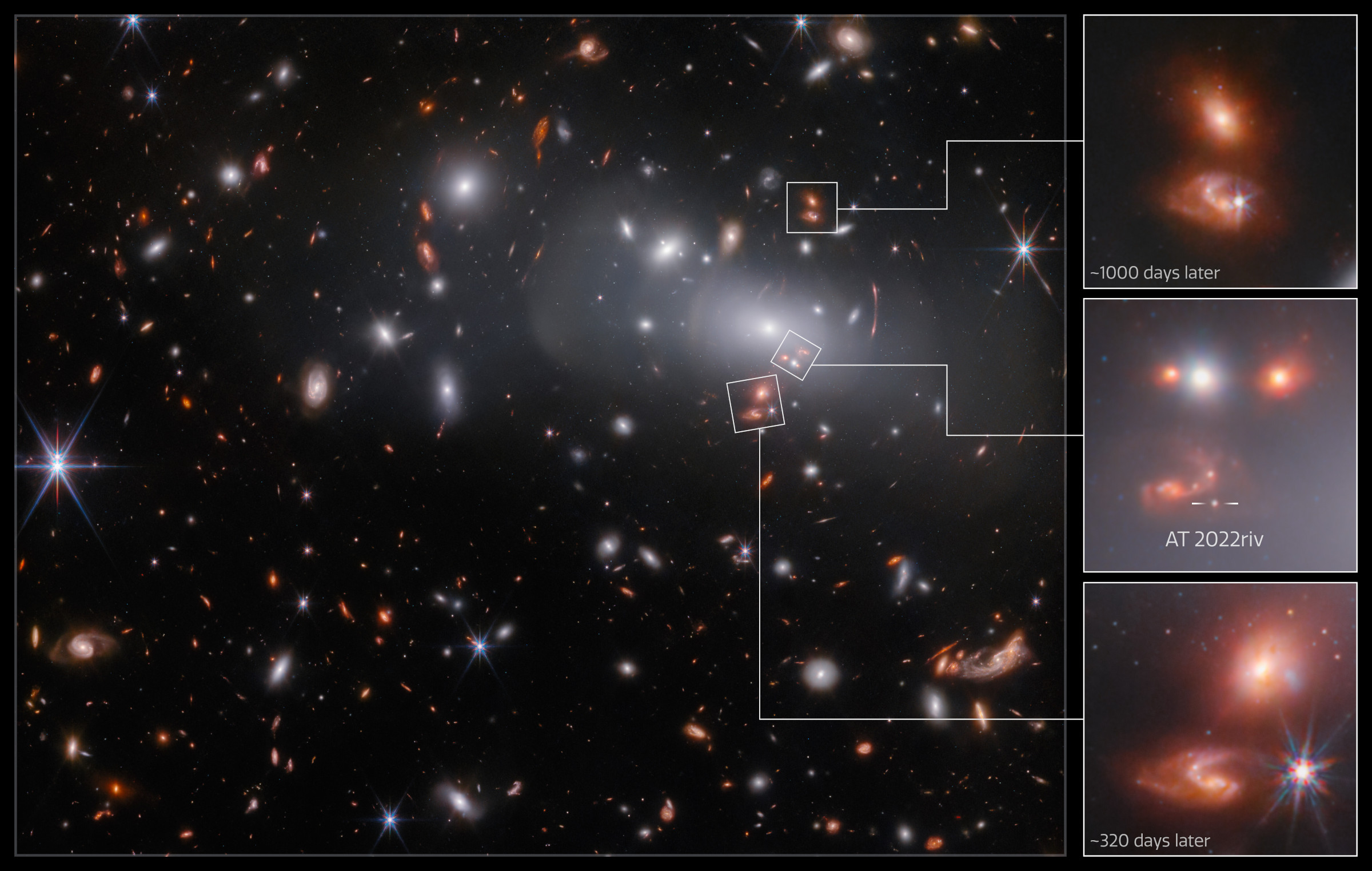The James Webb Space Telescope continues to peer into the recesses of our universe. One of its latest images takes advantage of a cosmic effect known as gravitational lensing, allowing scientists to peer further through the universe than might normally be possible. The result, though, is a cosmic mirage, allowing Webb to pick up the same galaxy at three distinctly different points in time.
If you’ve paid attention to Webb’s previous observations at all, then you’ll know that looking at galaxies far, far away is like looking back in time. That’s because light takes time to travel, and when galaxies or stars reside thousands of light-years away, we can catch a glimpse of what that galaxy looked like several thousand years ago. This cosmic mirage is a perfect example of how like time traveling observing the universe can be.
That’s because this new image from Webb, which the European Space Agency shared this month, showcases the same galaxy cluster three different times in the same image. What’s more intriguing is that the three different times are also different points in time, allowing astronomers to observe the cosmic mirage at three different points in time.

In this case, the galaxy that we’re seeing mirrored through time is a supernova-hosting galaxy known as AT 2022riv. This galaxy, which is located far from our own, is only visible thanks to gravitational lensing caused by a galaxy cluster known as RX J2129. By using the strong gravity of the galaxy cluster to peer deeper into the universe, scientists were able to catch sight of the cosmic mirage.
The mirage is so spectacular because it showcases AT 2022riv’s supernova at three different points in time. The first image showcases the supernova, while the second image is roughly 320 days later. At that point, the supernova has already faded. The final appearance within the cosmic mirage is approximately 1000 days after the first.
This phenomenon is spectacular because it allows us to see just how strong the effects of gravitational lensing can be. Further, if we can repeat this mirage-like event in other observations, we could further inspect important cosmic events, giving scientists more data to decipher and learn from.
If you’re looking for more cool space news, you could also check out the latest research about Jupiter’s auroras, which scientists have proven exist on all four of the larger moons orbiting the gas giant.








